

The Conversation Prism v4.0 by Brian Solis and JESS3 (2013) Good.Co - Self discovery network. 5 Trust Builders & 5 Trust Destroyers. This is a guest post by Bernd Nurnberger.

The original on his blog – Community of practice and trust building A few days ago I shared my crude model how we go from words to trust. I strung it along: word, definition, context, grammar, meaning, concept, understanding, salience, insight, trust, reputation. Cardon02.JPG (Image JPEG, 1397x966 pixels) - Redimensionnée (82%) Collab_vis. e-Research infrastructure: visualization practices and profiles.
Attention Profiling Mark-up Language. APML (Attention Profiling Mark-up Language) is an XML-based format for expressing a person's interests and dislikes.
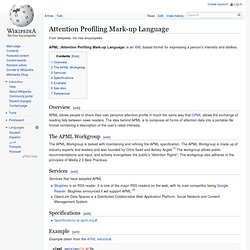
Overview[edit] C.F.O.I.R. Le design de la visibilité : un essai de typologie du web 2.0. La manière dont est rendue visible l’identité des personnes sur les sites du web 2.0 constitue l’une des variables les plus pertinentes pour apprécier la diversité des plateformes et des activités relationnelles qui y ont cours.
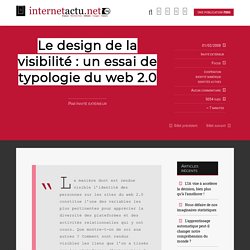
Que montre-t-on de soi aux autres ? Comment sont rendus visibles les liens que l’on a tissés sur les plateformes d’interaction ? Comment ces sites permettent-ils aux visiteurs de retrouver les personnes qu’ils connaissent et d’en découvrir d’autres ? Dominique Cardon, sociologue au laboratoire Sense d’Orange Labs, propose ici une typologie des plateformes relationnelles du web 2.0 qui s’organise autour des différentes dimensions de l’identité numérique et du type de visibilité que chaque plateforme confère au profil de ses membres. La décomposition de l’identité numérique L’identité numérique est une notion très large.
Le paravent. Le clair-obscur. The Adinkra Symbols and Icons Project. Conceptual Framework for Online Identity Roles. I just wrapped up a final project for an aesthetics course this semester, the assignment being to create a “Database of the Self.”
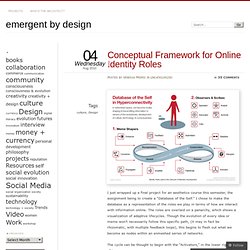
I chose to make the database as a representation of the roles we play in terms of how we interact with information online. Patterndynamics(1024x734) PatternDynamics™ PatternDynamics. Blogging Innovation » Conceptual Framework for Online Identity Roles. I just wrapped up a final project for an aesthetics course this semester, the assignment being to create a “Database of the Self.”
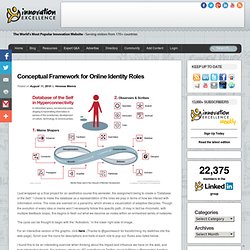
I chose to make the database as a representation of the roles we play in terms of how we interact with information online. The roles are overlaid on a panarchy, which shows a visualization of adaptive lifecycles. Though the evolution of every idea or meme won’t necessarily follow this specific path, (it may in fact be rhizomatic, with multiple feedback loops), this begins to flesh out what we become as nodes within an enmeshed series of networks.
The cycle can be thought to begin with the “Activators,” in the lower right side of image. For an interactive version of the graphic, click here. Ryan Shaw » New Remix Culture Diagram. Entanglement ( personas / metaconstructs ) gen001. 6 thinking hats. The Architecture of Participation. By Tim O'Reilly June 2004.
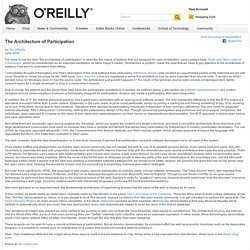
Open Participation vs. Expert Groups: Biases and filters - The Collective Intelligence Blog. During the training workshops I give, the participants often ask me the following question: what are the advantages and disadvantages of the open participatory models vs. expert groups?

This issue appears at almost every debate on collective intelligence. Octalysis: Complete Gamification Framework - Yu-kai Chou. (This is the Gamification Framework that I am most known for.

Within a year, it was translated into 9 different languages and became classic teaching literature in the gamification space in the US, Europe, Australia and South America.) User Types. Quiet: The Power of Introverts - By Susan Cain. The Video Game Engine in Your Head. For years now, physicists and engineers have been building computer simulations of physics in order to understand the behavior of objects in the world.
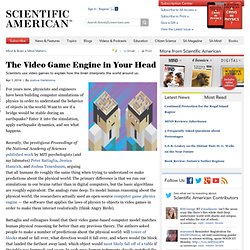
Want to see if a bridge would be stable during an earthquake? Enter it into the simulation, apply earthquake dynamics, and see what happens. Recently, the prestigious Proceedings of the National Academy of Sciences published work by MIT psychologists (and my labmates) Peter Battaglia, Jessica Hamrick, and Joshua Tenenbaum, arguing that all humans do roughly the same thing when trying to understand or make predictions about the physical world. The primary difference is that we run our simulations in our brains rather than in digital computers, but the basic algorithms are roughly equivalent.
Battaglia and colleagues found that their video game-based computer model matches human physical reasoning far better than any previous theory. All kinds of minds. Susan Cain: The power of introverts. 10 Myths About Introverts. Odessa to the Future» Blog Archive » Think The Unthinkable. Personas Metaconstructs - gavinkeech. Character & structures. 13 Community Role Archetypes (Which One Are You?) Decker and I had a blast putting this together – It’s a breakdown of some archetypical roles in community we’ve noticed over the years, along with the specific people in our community who fill those roles.

More on this below. (Download a larger-font, editable version here) Méthode Belbin. Community Management: Vers une typologie des membres de la communauté. The Problem With Online Ratings.